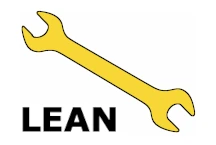
What is Standardized Work
Standardized Work are documented procedures that capture best practices.
Why Standardized Work
General advantages
- Standardizes best practices of processes.
- Reduces variability of processes and their outputs (Mura and Muri).
Reduces waste types
When to use Standardized Work
Essential conditions
None
N/A
Non-essential conditions
Consensus
Helps in sustaining results.
Visual Management
Provides feedback on the process.
How to implement and use Standardized Work
Implementation
Process:
- Have employees who perform the task reach a consensus on the “one best way” (the best practice) to perform the task and document it.
A Standardized Operating Procedure (SOP) document must contain:
- Task sequence
- Required tools
- Required items (the inputs)
- Cycle time
- Quality criteria (if applicable)
Aids:
- The free and open-source software Diagrams.net (previously called draw.io) helps create visual SOPs easily.
- Templates are available for both Diagrams.net and Word.
Use
Use the three-step rule:
- If we have no standards, we need to develop them.
- If we have standards, we should work according to the standards.
- If we work according to the standards, we should continuously try to improve the standards.
Be aware:
- Once standards are defined by consensus, everybody will be expected to follow the standard.
- The standard must be a “living” document that is easy to change.
Where to find it
IASSC Body of Knowledge:
Lean: 28
Yellow ➔ Apply
Green ➔ Create
Black ➔ Create
Lean Six Sigma: 5.1
Yellow ➔ Apply
Green ➔ Apply
Black ➔ Apply
Lean tools are great. Results are better.
Take the next step with Procestimal — expert-designed modules that help you apply Lean with real-world impact.
Try it free for 30 days — no credit card, no pressure.
About the Author
Floris Lap is an IASSC-certified Lean Six Sigma Black Belt and founder of Procestimal. He empowers organizations to maximize value and reduce waste through practical Lean Six Sigma solutions—contributing to a more sustainable world where businesses thrive with minimal resources. Contact us
Last updated on:
